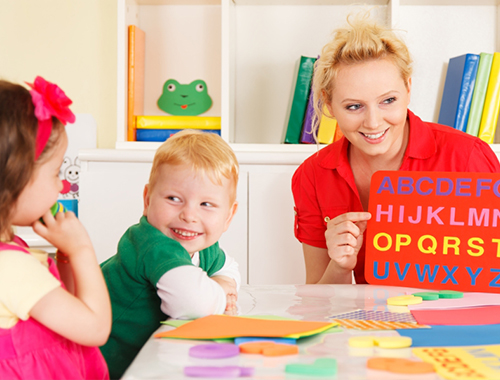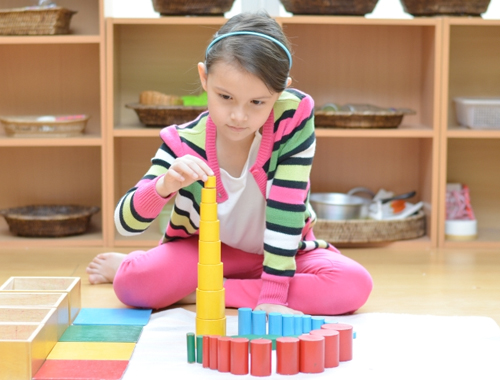Synopsis1 of 6
Chapter 9. A Look at Early-Childhood Education in the United States
9.1 Synopsis
Welcome
A Look at Early-Childhood Education in the United States
This activity demonstrates how early-childhood-education enrollment has increased significantly since the 1960s and examines some of the types of programs available to preschool-aged children.
Click the 'Get Started' button below to start this activity

9.2 A Look at Early-Childhood Education in the United States
Preschool Enrollment Over The Years
Children ages 3–5 are much more likely to be enrolled in a preschool, nursery-school, or kindergarten program today than preschool-aged children were in the 1960s.
Click here to see how preschool enrollment has changed over the years, and then answer the questions below.

1.
2.
9.3 A Look at Early-Childhood Education in the United States
A Look at Early-Childhood Education in the United States
While no label for early-education programs indicates quality, every type emphasizes different skills, goals, and methods. Child-centered programs stress each child’s development and growth; teachers encourage children to follow their own interests rather than adult directions. The classroom space and its materials are arranged to allow self-paced exploration.
Teacher-directed programs stress academics, and often entail one adult teaching an entire group. Children learn letters, numbers, shapes, and colors according to a set timetable, and they also nap, snack, and visit the restroom on schedule. The goal of teacher-directed programs is for children to be “ready to learn” when they begin elementary school. The following screen describes two types of child-centered programs (Montessori and Reggio Emilia) and one well-known teacher-directed program (Head Start).

9.4 A Look at Early-Childhood Education in the United States
Three Types of Early-Education Programs
Montessori
Believing that children need structured, individualized projects to give them a sense of accomplishment, Maria Montessori started this early-education program more than 100 years ago in Rome, Italy. Today, these schools present many literacy-related tasks to young children, who seek out learning tasks rather than sit quietly until a teacher directs them.
The photo to the right depicts a typical Montessori classroom.
Reggio Emilia
Also originating in Italy, Reggio Emilia schools encourage children to master skills that are not usually taught in North American schools until around age 7, such as forming letters or cutting paper. Measurement of achievement is irrelevant to the core belief that children should learn and explore in their own way.
Head Start
Head Start is a federally funded early-childhood intervention program that promotes school readiness of young children from low-income families through agencies in their local community. In addition to education services, programs provide children and their families with health, nutrition, social, and other services. Head Start services are responsive to each child and family's ethnic, cultural, and linguistic heritage.

9.5 A Look at Early-Childhood Education in the United States
A Look at Early-Childhood Education in the United States

3. Selecting a preschool program
4. Montessori schools
9.6 Activity Completed!
Congratulations! You have completed this activity.
REFERENCES
National Center for Education Statistics. (2016, October). Table 202.10: Enrollment of 3-, 4-, and 5-year-old children in preprimary programs, by level of program, control of program, and attendance status: Selected years, 1970 through 2015. Washington, DC: Institute of Education Sciences, U.S. Department of Education.